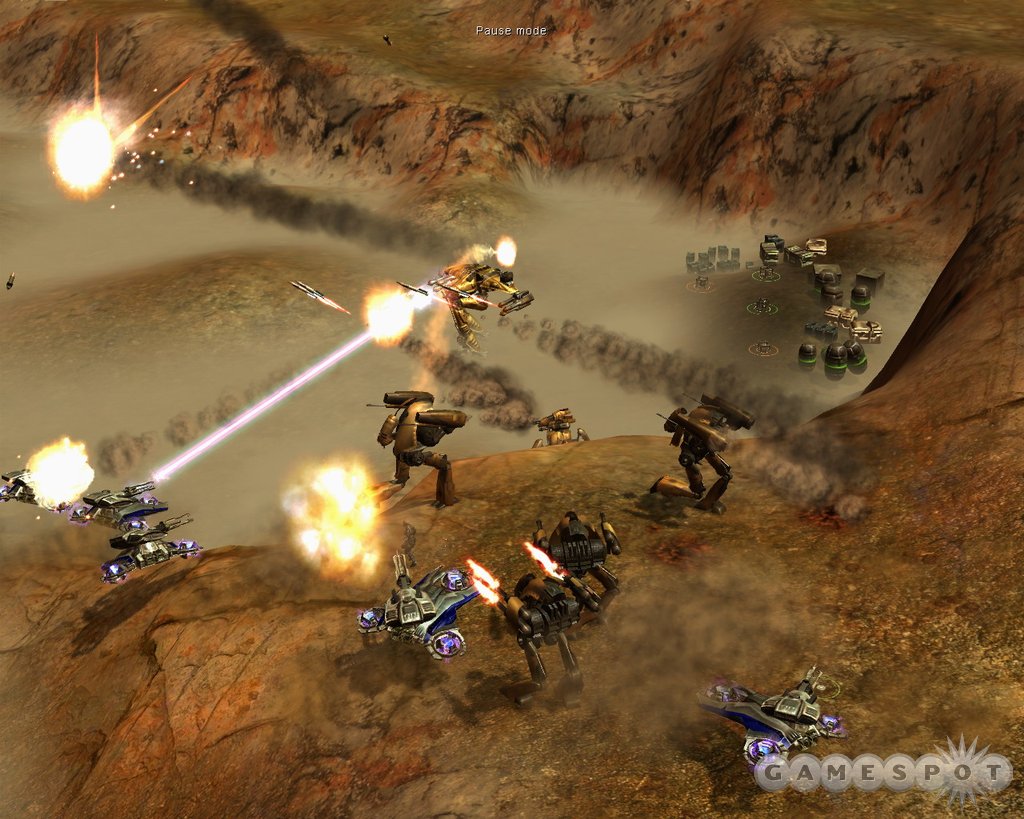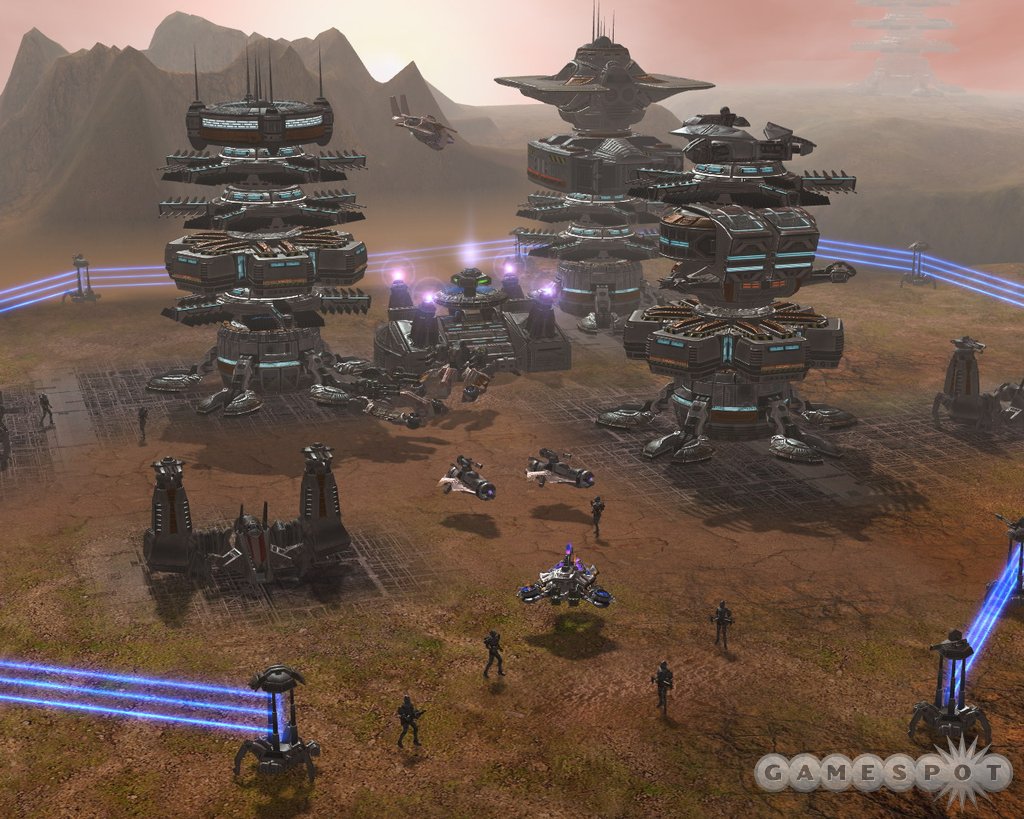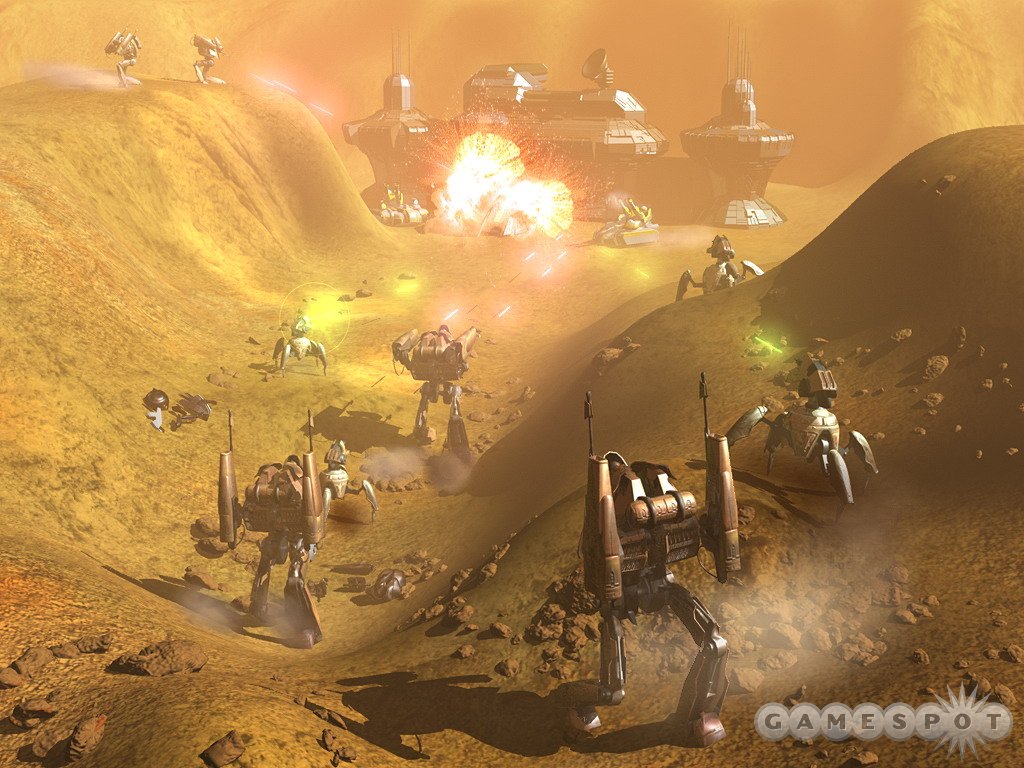Earth 2160 First Look
This advanced real-time strategy game will incorporate cutting-edge graphical technology seen in first-person shooters.
Earth 2160 may very well be the best-looking strategy game that you haven't heard of, but that's about to change. This Polish-designed real-time strategy game is actually the third game in the long-running Earth saga, which started all the way back in 1997 with the DOS-based Earth 2140 and continued in 2001's Earth 2150. Four years is a long time between chapters, but developer Reality Pump has spent them working on Earth 2160, taking all the lessons learned from the series' fans and mating them with the latest in cutting-edge graphics technology. Or, as the developers like to put it, they've created a graphics engine worthy of a first-person shooter and are using it for a real-time strategy game. We got a close look at the technology in Earth 2160 recently, and we can say that Reality Pump has certainly delivered on the graphics so far.

The title Earth 2160 is something of a misnomer, as the game will actually take place on Mars and other worlds. That's because in the series' storyline, Earth is destroyed and the three surviving human factions relocate to Mars. Earth 2160 will continue the tale, describing how the three factions--all taken from the earlier games--continue to battle it out on Mars for supremacy. However, in their efforts to terraform the planet, the factions awaken an imprisoned alien race on Mars. This mysterious race will serve as the fourth playable faction in the game, though not many details are being shed on it quite yet.
If you played the earlier Earth games, then you already know the scale of this series. Earth 2150 was one of the first fully 3D real-time strategy games, but what was even more impressive about it was that you could build hundreds of units and engage in titanic battles so huge that they brought even the beefiest of machines at the time to a crawl. The gameplay was further enhanced by the fact that you could design and build your own units, mixing and matching parts that you researched in order to counter the latest in enemy technology. This also meant that there were hundreds, and even thousands, of different unit combinations that you could explore. Meanwhile, you could also upgrade and arm your buildings back at the base, equipping them with laser cannons and missile launchers, meaning that any attack on your base would guarantee an epic battle. As expected, Earth 2160 will update and enhance many of the key features of Earth 2150. However, the one notable feature from Earth 2150 that won't make the cut is the ability to terraform, and tunnel beneath, terrain.

This will be very much of an old-fashioned, epic-sized real-time strategy game, as you can control one of four factions, research a huge tech tree, design and build hundreds of units, and simply crush the other side. Each of the four playable factions will be completely unique, and the three returning human factions retain their identities from earlier games. The Eurasian Dynasty will feature futuristic versions of modern-day tanks and other vehicles, while the United Civilized States will still rely on mech-style walking tanks and scorpion-like vehicles. Each faction will have its own campaign, running about seven missions in length. Don't let the relatively small number of missions fool you, though, as we're told that the total gameplay in Earth 2160 is calculated at around 150 hours. Due to the epic size of the campaign, you will actually carry over your units and technology from mission to mission, meaning that you won't have to start from scratch in each mission, like you're forced to do in most real-time strategy games.
It's hard to overstate just how advanced the graphics engine is. Earth 2160 will take advantage of the latest pixel and vertex shaders--the same ones used in games such as Far Cry and Half-Life 2--so its look and feel are light years ahead of the rest of the real-time strategy genre. The game is packed full of high-tech terms, such as volumetric shadowing and high dynamic range lighting. To get an idea of just how much more advanced Earth 2160 is than Earth 2150, which was a great-looking game for its time, units in Earth 2150 required 50 to 70 polygons each. In comparison, units in Earth 2160 will require up to 1,500 to 5,000 polygons each. As you can probably tell, you'll need the latest and greatest video cards to appreciate the game with the maximum level of eye candy turned on, but Reality Pump is scaling the game so that it will run on more mainstream cards. You'll probably need at least a 1.5GHz CPU and a GeForce 3-level card in order to run the game, and obviously the more horsepower you have the better. It's hard to get an idea of what the performance will be like, as the version of the game that we saw still had a lot of debug code in it and had not been optimized.

Another impressive facet of the engine is the amount of detail, particularly when zoomed up close. Earth 2160 loses none of its graphical detail when zoomed in, which means that the designers can use the engine to power the in-game cutscenes. You'll also be able to toggle between a first-person perspective and the traditional top-down view. This will let you jump into each unit and "see" what it sees, to give you a feeling of the view from the ground. Also, part of the reason the designers implemented the first-person view is so that you can admire the sky, which you normally don't see from a top-down view. In most games, the sky is represented with a simple texture, but in Earth 2160, the sky is fully modeled in 3D with a day/night cycle. The level of detail is extraordinary; clouds will cast shadows across the ground and wind will cause ripples across water. The game will also ship with an advanced physics engine, which will come into play in many battles. For example, you can roll giant boulders down a hill and watch them slam into enemy units below, or you can try to topple an enemy tower so that it falls on and destroys another.
From a technological standpoint, Earth 2160 is the first major real-time strategy game that we've seen to embrace the latest advances in graphics hardware. The game is simply amazing to look at, though we'll have to wait a bit longer to see what the gameplay is like. Still, this is one real-time strategy game to keep an eye on. Earth 2160 is scheduled to ship in North America and Europe in late May or early June.
Got a news tip or want to contact us directly? Email news@gamespot.com
Join the conversation